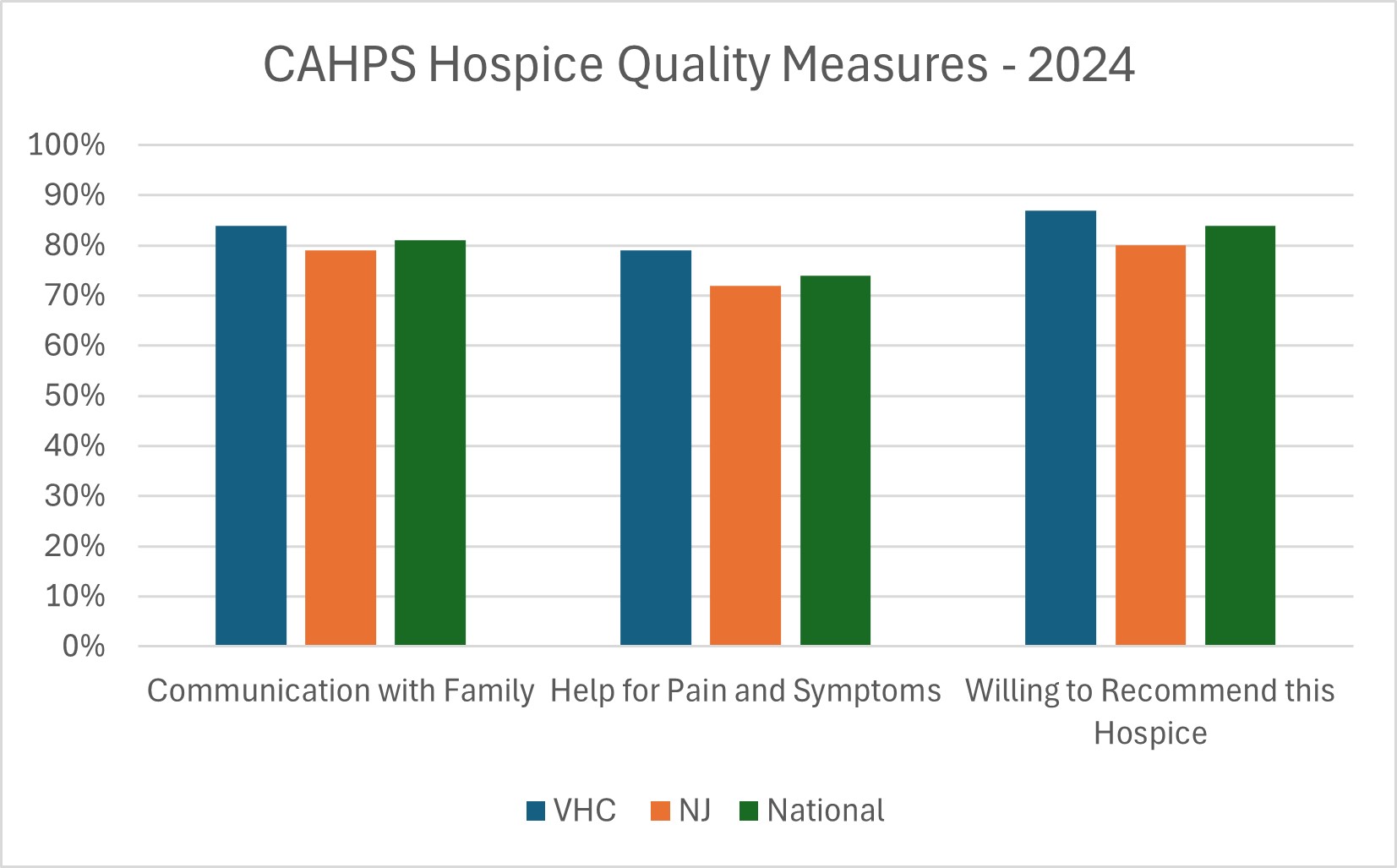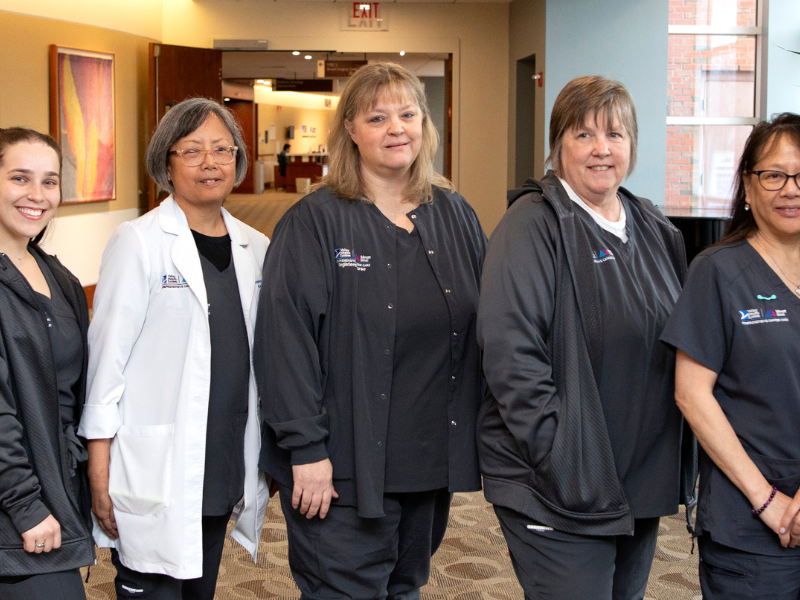EMPIRICAL OUTCOMES focuses on demonstrating how structures and processes produce outcomes in the healthcare team, organization, and systems of care essential to a culture of excellence and innovation.
The Valley Hospital
Reducing Deferred Cases in the Pain Management Department using Process Improvement
Using the PDCA cycle, the Pain Management Department was able to reduce their rate of deferred cases in which patients were postponed or canceled, from 5.33% to 2.88%. The department was able to achieve this goal by waiting for authorization from the insurance companies before scheduling the patient for their procedure.
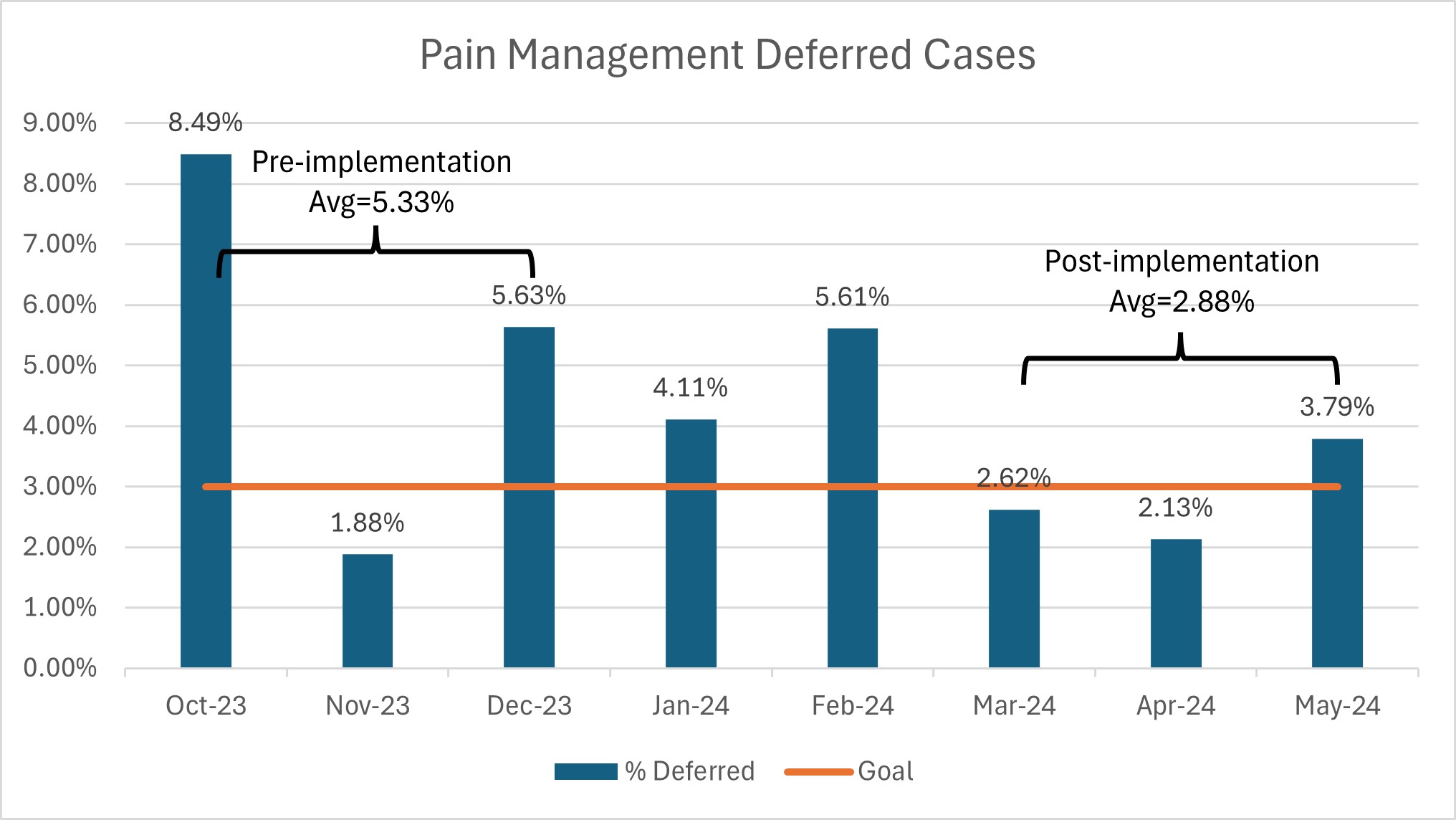
Increasing the Number of Referrals to the Care at Home Program from Eligible Valley Inpatients
The Care at Home program is one of many Transitions of Care programs available to patients who are being discharged from The Valley Hospital. For eligible patients, a primary care provider will visit the patient’s home or assisted living facility within seven days of being discharged from the hospital to make sure the patient is getting better. This program is a proactive way to reduce hospital readmissions and length of stay, and can provide needed peace of mind to patients and families who are concerned about leaving the hospital.
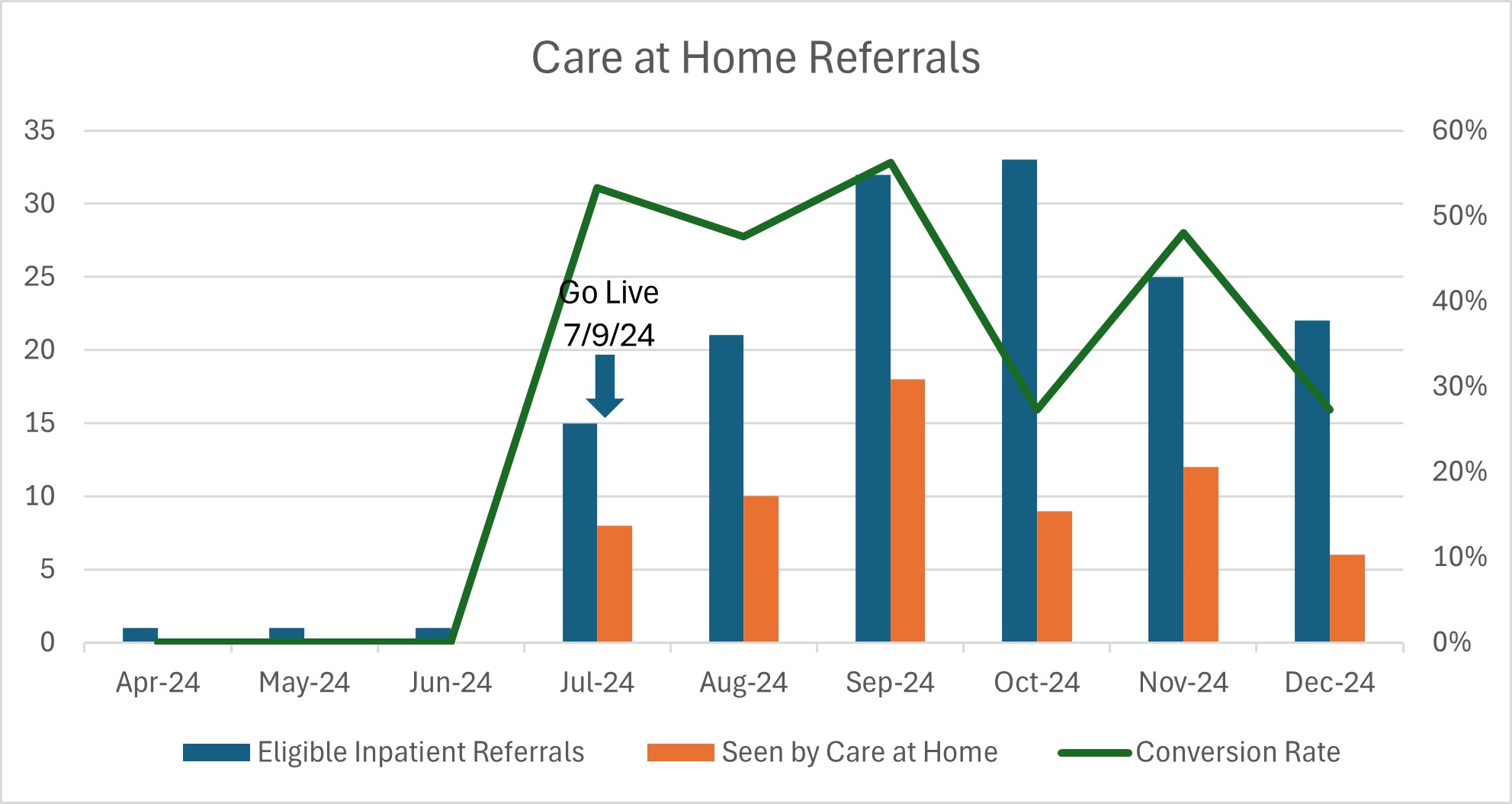
2024 Patient Experience Scores for TVH Ambulatory Surgery
Based on patient experience surveys, ambulatory surgery nurses in The Valley Hospital were rated higher than nurses in other facilities across New Jersey and the United States. Valley nurses performed at the 88th percentile nationwide for “Nurses Concern for Comfort” and at the 85th percentile nationwide for “Nurses Overall.”
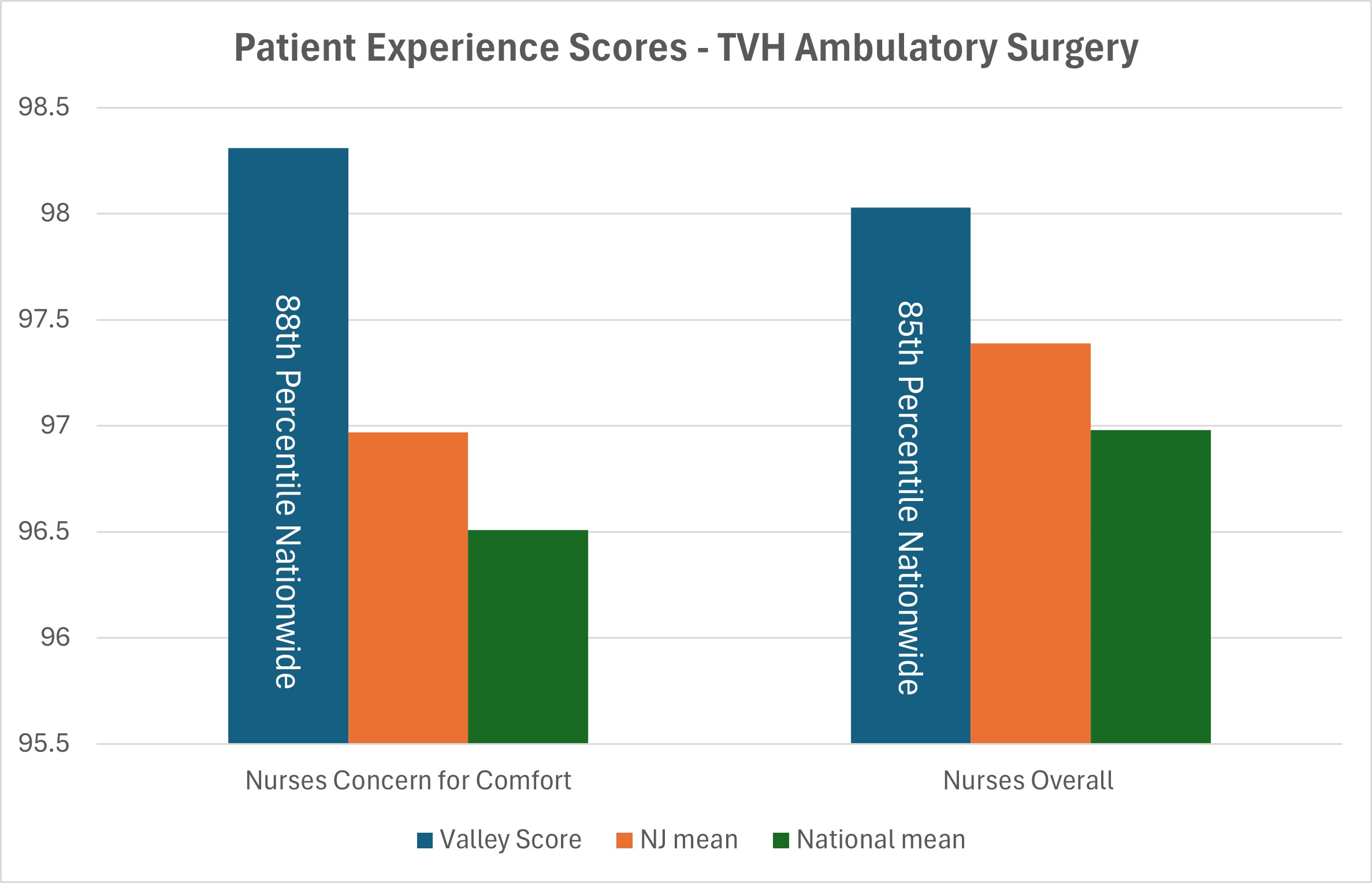
2024 Patient Experience Scores for TVH Inpatient
Based on patient experience surveys, nurses in The Valley Hospital inpatient setting were rated higher than nurses in other facilities across New Jersey and the United States. Valley nurses performed at the 95th percentile in New Jersey for “Staff Concern for Privacy” and at the 96th percentile in New Jersey for “Staff Addressed Emotional Needs.”
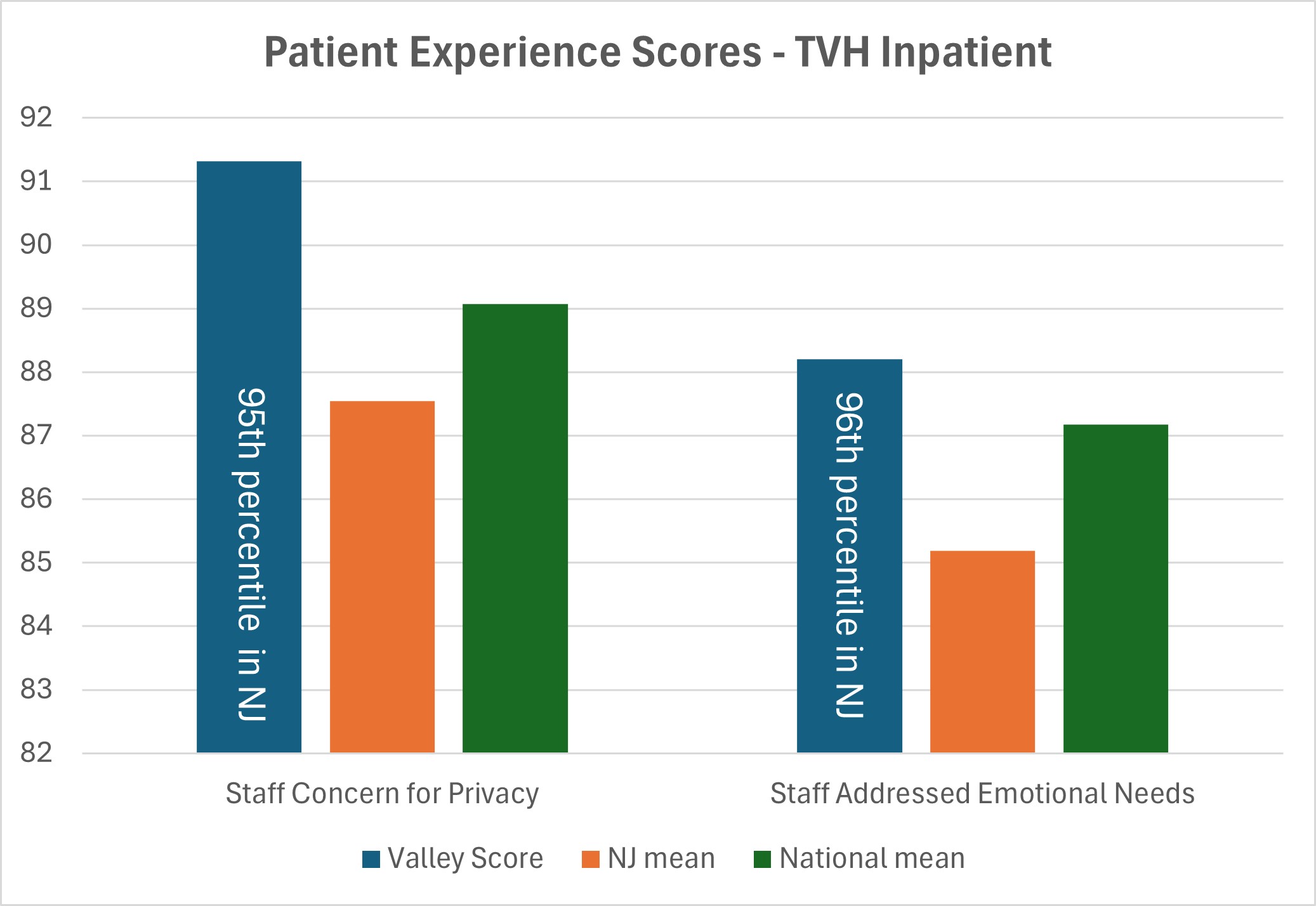
TVH Catheter-Associated Urinary Tract Infections: 2022 – 2024
We continue to reduce the occurrence of catheter-associated urinary tract infections (CAUTI) through a partnership between The Valley Hospital nurses, the Hospital Acquired Infection (HAI) Taskforce, and the Infection Prevention Team. Our continued progress with reducing CAUTIs reflects a focus on infection prevention and timely removal of urinary catheters.
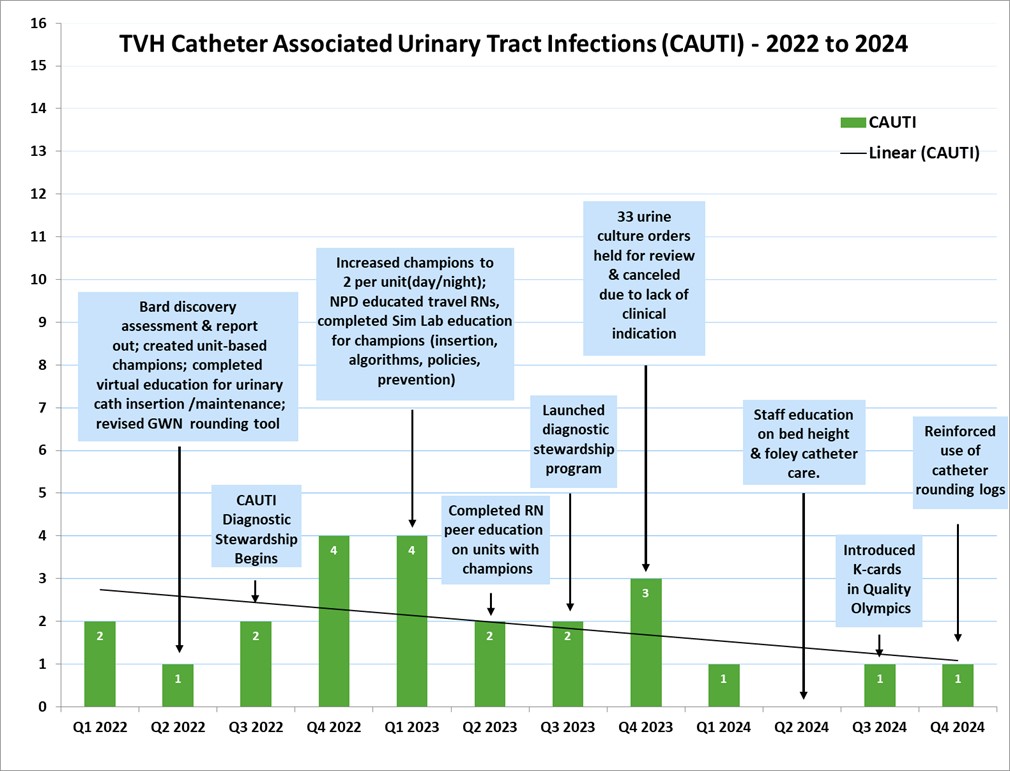
Valley Medical Group
Expanding Access to Geriatric and Homebound Patients through APN/MD Partnership
In 2024, Valley Medical Group advanced practice providers continued their partnership with Ahmed Shokry, MD, to expand the Care at Home Program from five assisted living facilities (ALFs) in 2023 to 10 ALFs in 2024. This translated to a significant increase in patients receiving services from the Care at Home Program. This innovative program provides additional options for ColigoCare patients who are homebound, living in an ALF, or recently discharged from the hospital to receive high-quality care in a familiar environment.
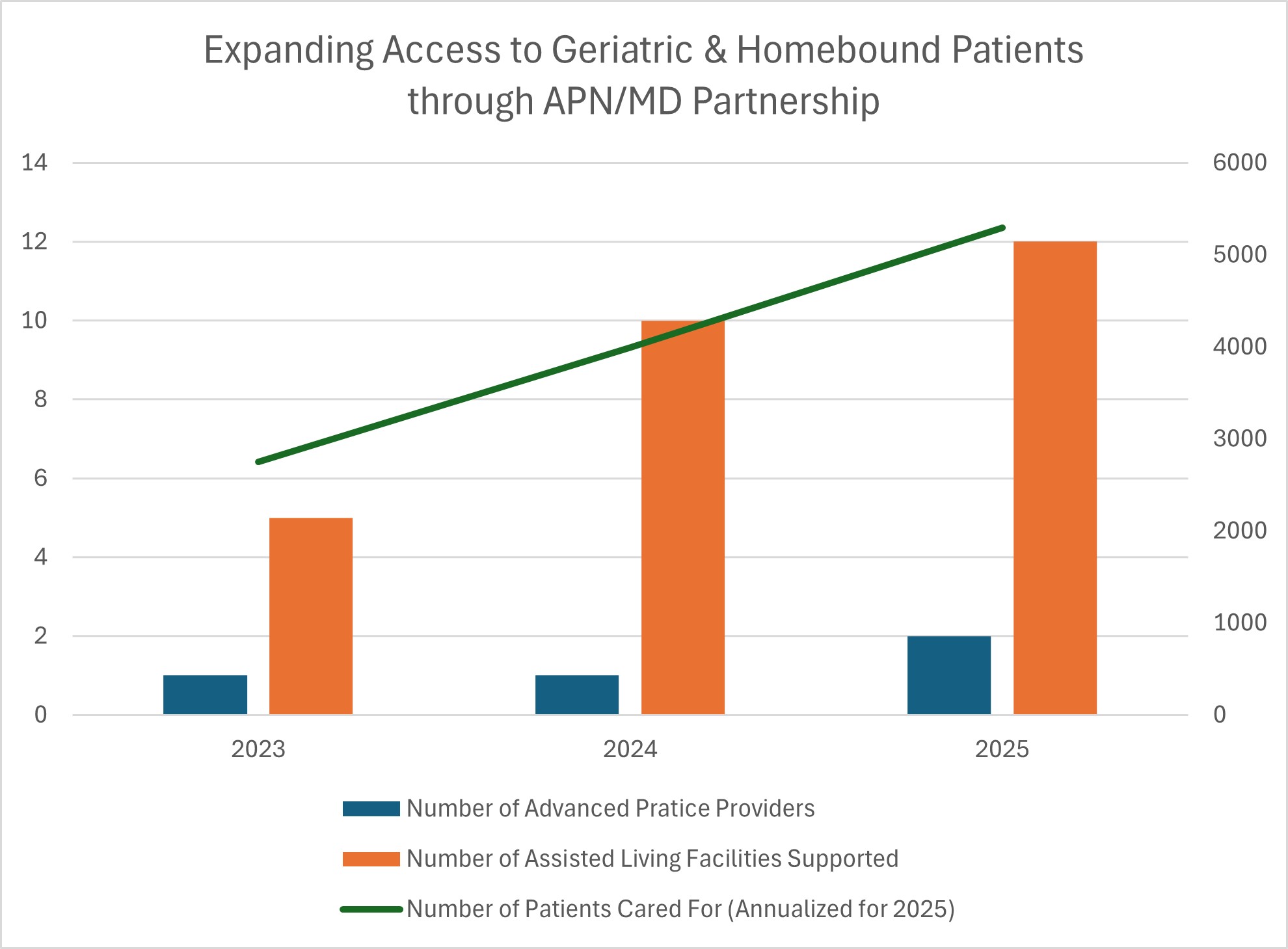
Retention Rates for VMG Advanced Practice Providers: Impact of Participating in ThriveAP Didactic Training
In 2024, 50 advanced practice providers (APPs) in Valley Medical Group (VMG) were enrolled in the ThriveAP Didactic Training Program, which led to greater retention rates when compared to the overall group of VMG APPs and the national rate for APP retention.
This 12-month program is accredited by ANCC and AAPA, emphasizes interprofessional training and communication, and is designed to provide APPs with education and support to supplement existing training. Participants complete between 90 and 120 CMEs, attend weekly 90-minute classes, and learn about a wide range of topics from specialty-specific education, documentation, coding, billing, burnout, and self-care.
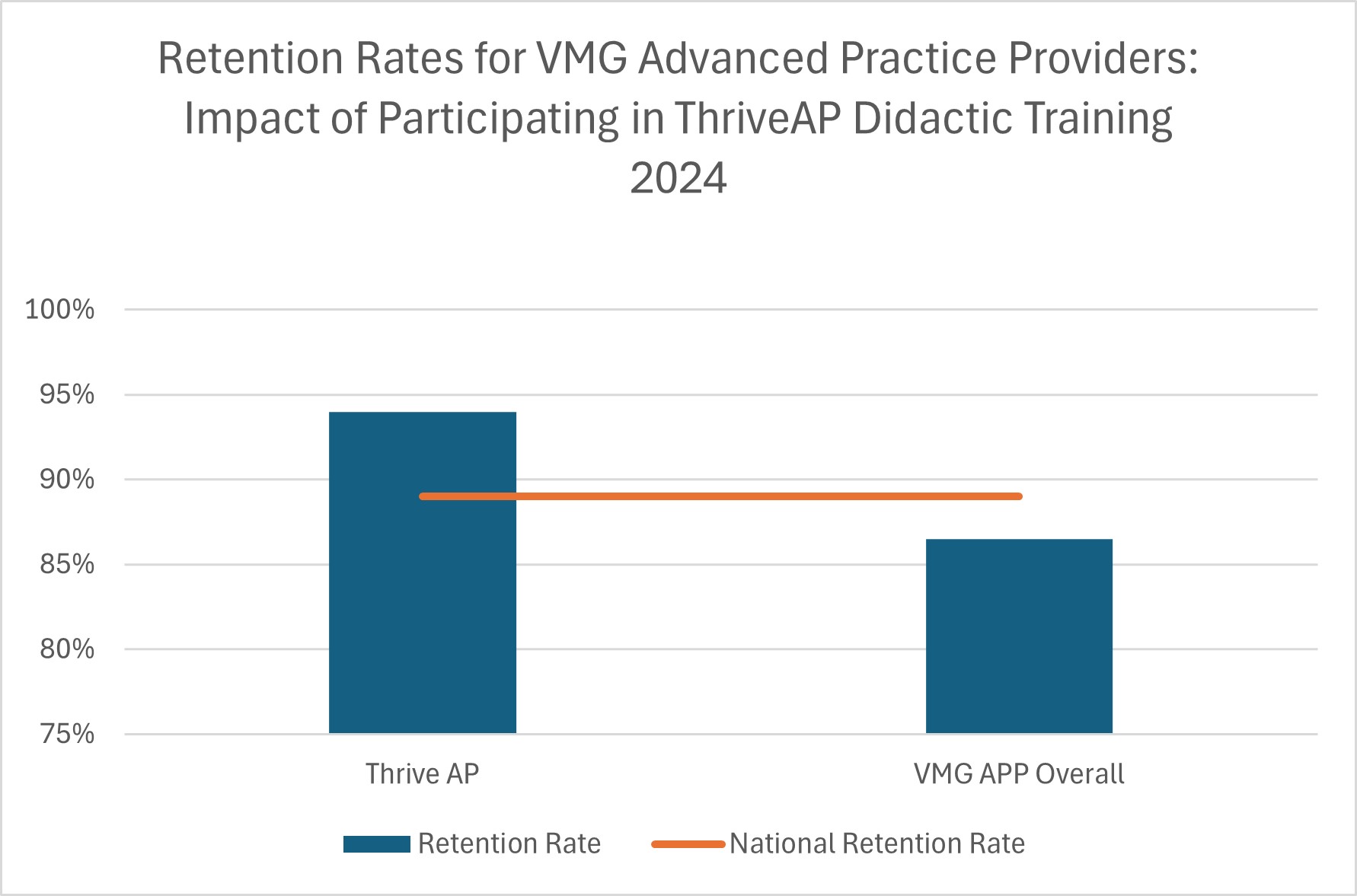
2024 Patient Experience Overall Score for Care Provider: APNs vs. Press Ganey Mean
Based on Press Ganey patient experience surveys, Valley Medical Group advanced practice nurses continue to be rated favorably overall for questions related to the “Care Provider,” as compared to mean performance for all Press Ganey providers nationwide.
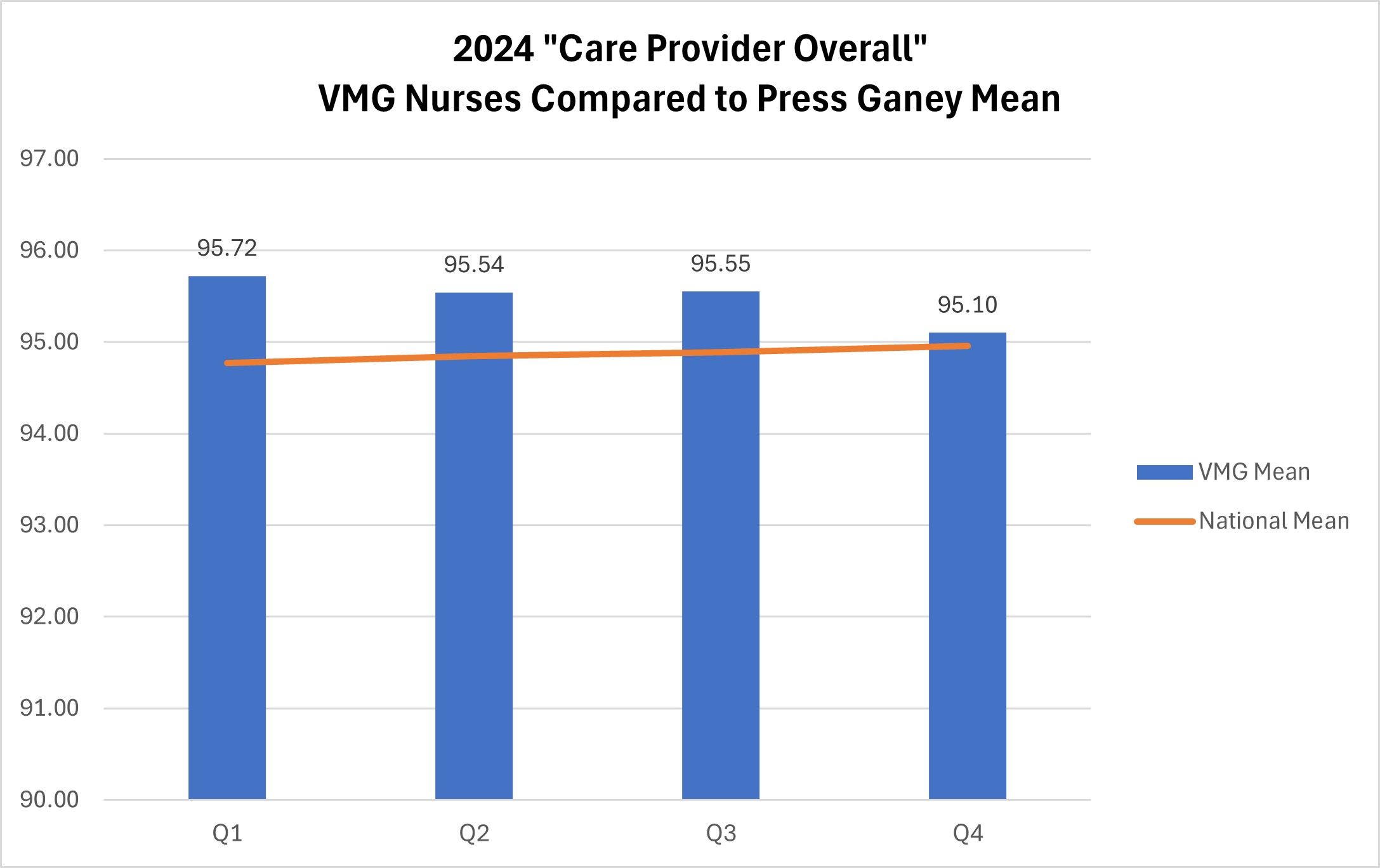
“Care Provider’s Efforts to Include you in Decisions:” VMG Nurses vs. Press Ganey Mean
Based on Press Ganey patient experience surveys, Valley Medical Group nurses (including APNs, RNs, and LPNs) continue to be rated favorably overall for questions related to their efforts to include patients in decisions, as compared to mean performance of nurses for all Press Ganey surveys nationwide.
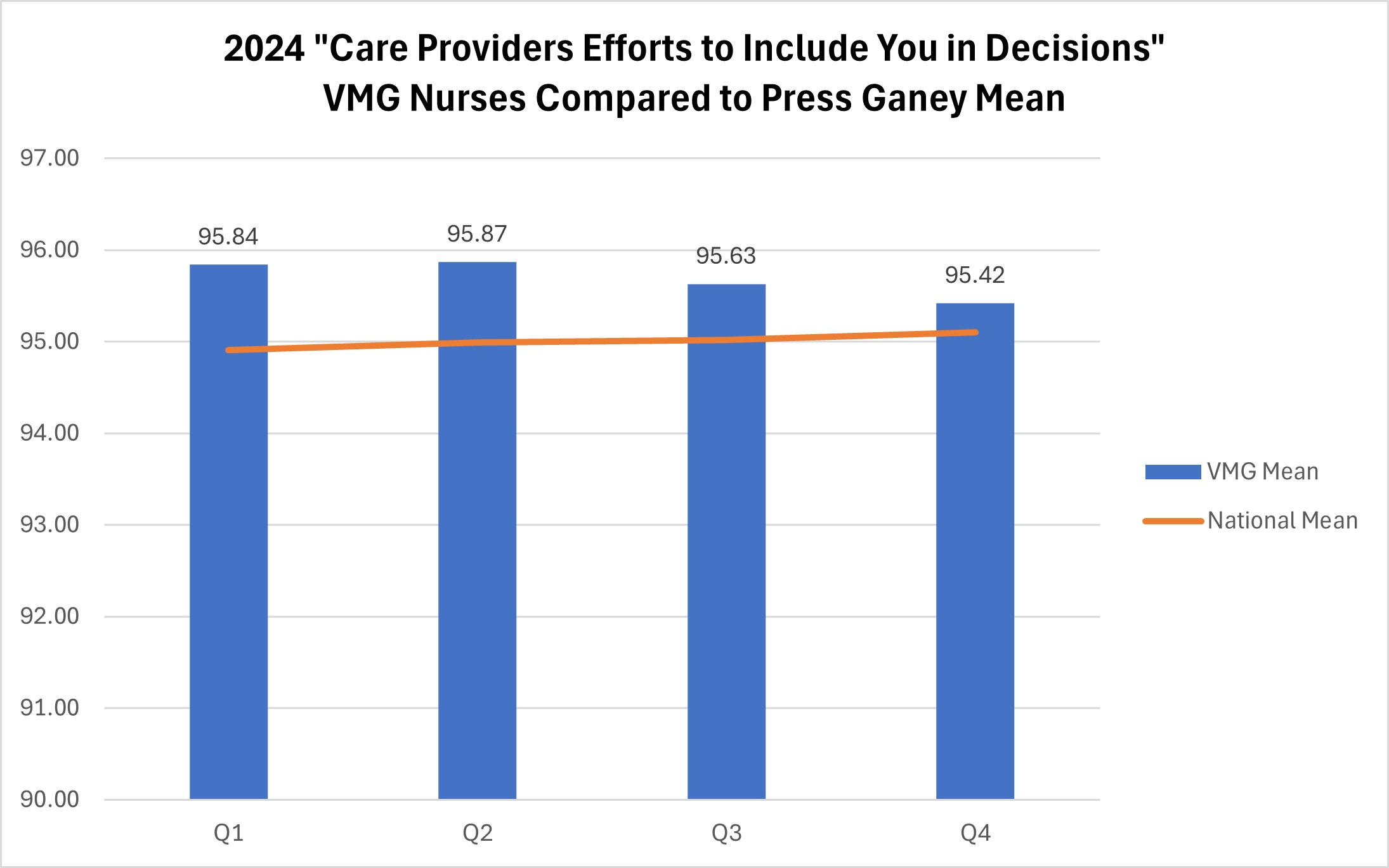
Valley Home Care / Valley Hospice
Valley Home Care Management of Oral Medications
Valley Home Care (VHC) demonstrates nursing excellence and exceeds both national and statewide performance on patient reported outcomes related to management of oral medications. This important quality indicator demonstrates VHC’s dedication to patient safety and ensures that patients and caregivers can successfully follow medication regimens after discharge. Through targeted improvement efforts, VHC improved scores for management of oral medications between 2023 and 2024, which helps to increase medication adherence and improve quality of care.
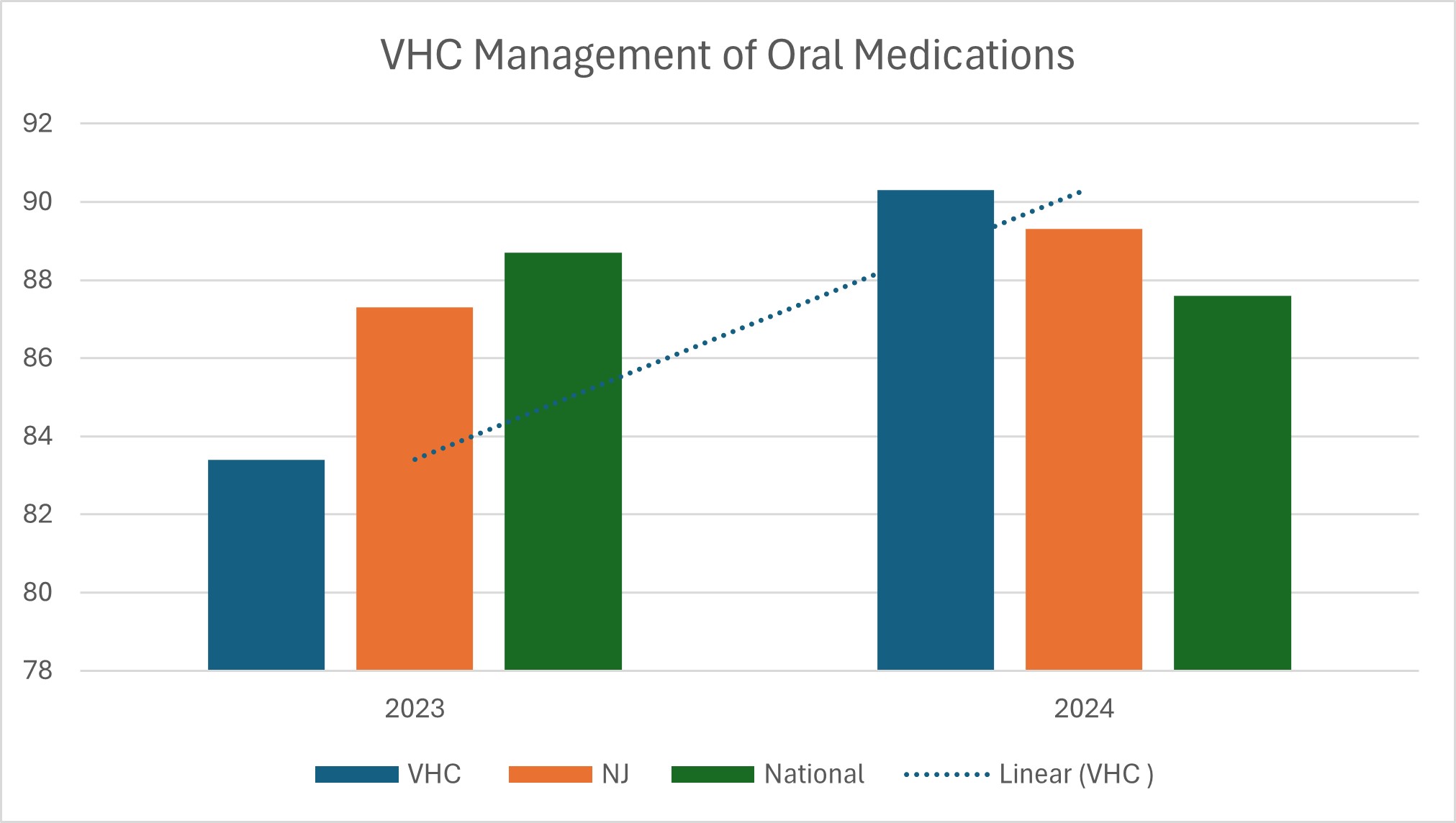
Hospice Quality Measures – 2024
Valley Hospice continues to be a leader for patient experience when compared to both New Jersey and national performance. In 2024, Valley Hospice introduced the Institute for Healthcare Improvement’s Age Friendly Care Initiative, seeking to understand and address “what matters most” to their patients. In 2024, Valley Hospice’s unwavering commitment to patient-centered care propelled them from a 3-star CMS rating to a 4-star CMS rating.
